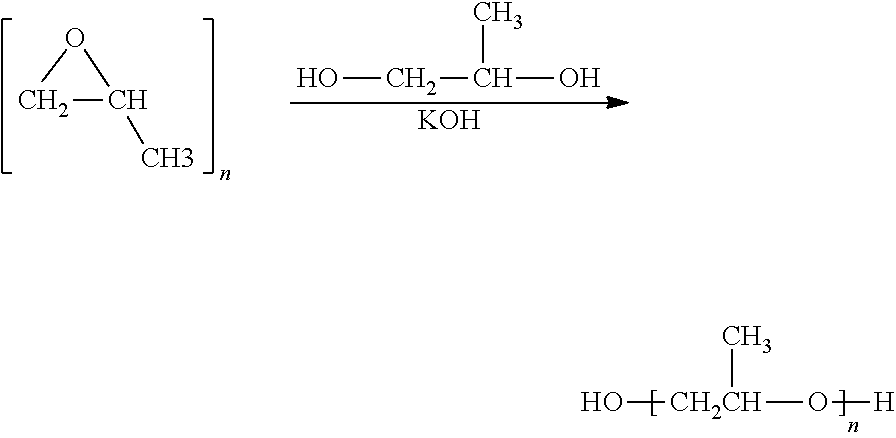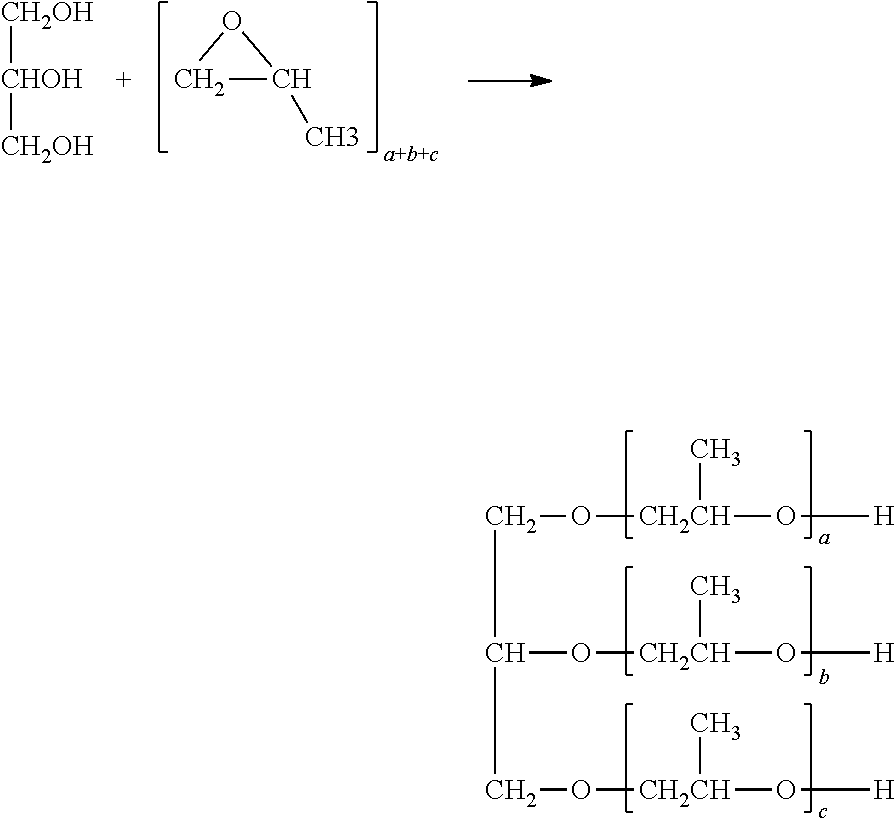Wood treatment for dimensional stabilization
- Summary
- Abstract
- Description
- Claims
- Application Information
AI Technical Summary
Benefits of technology
Problems solved by technology
Method used
Image
Examples
example 1
[0042]The dimensional stability of PPG treated wood was evaluated in the lab according to the American Wood Protection Association (AWPA) E4-11 evaluation protocol. PPG polymers with various molecular weights were used as treatment solutions. The average molecular weight of PPG ranges from 500 to 100,000. Generally, the treatments with lower molecular weight of less than 5,000 can be carried out at about temperature of 22-25° C. However, molecular weight of 5,000 or higher with high viscosity will require some degree of heating so that the temperature is maintained at 30 to 60° C. The details for the treating and testing are described as follows:
[0043]Wood Sample Preparation:
[0044]E-4 wood wafers measuring 6.4×25×50 mm (0.25×1×2″) in the longitudinal, radial and tangential directions, respectively, were cut from clear, straight-grained and kiln-dried SYP sapwood boards.
[0045]Treating and Conditioning:
[0046]The E-4 wafers were treated with desired solutions (see Table 1, below) follo...
example 12
[0055]The dimensional stability of PPG treated wood was evaluated in the lab according to the American Wood Protection Association (AWPA) E4-11 evaluation protocol. E-4 wood wafers measuring 6.4×25×50 mm (0.25×1×2″) in the longitudinal, radial and tangential directions, respectively, were cut from clear, straight-grained and kiln-dried SYP sapwood boards. E4 wood wafers were pressure impregnated with a PPG with a molecular weight of 3000. After pressure treatment, one or more polyisocynate compounds were applied to the surface of the treated wood wafers. The coated wafers were conditioned in the lab for a week prior to water repellency testing. The ASE and WEE measurements were carried out according to the procedures described in Example 1. The results are listed in Table 2.
[0056]Examples 12 to 15 in the Table 2 list the results from the treatment of Southern Yellow Pine wafers according to the methods of AWPA E4-11 with the treatment of PPG of various average molecular weights plus...
example 16
[0057]The dimensional stability of PTMEG treated wood was evaluated in the lab according to the American Wood Protection Association (AWPA) E4-11 evaluation protocol (see Example 1). The ASE and WEE measurements were carried out according to the procedures described in Example 1. The results are listed in Table 3.
PUM
| Property | Measurement | Unit |
|---|---|---|
| Temperature | aaaaa | aaaaa |
| Temperature | aaaaa | aaaaa |
| Temperature | aaaaa | aaaaa |
Abstract
Description
Claims
Application Information
 Login to View More
Login to View More - R&D
- Intellectual Property
- Life Sciences
- Materials
- Tech Scout
- Unparalleled Data Quality
- Higher Quality Content
- 60% Fewer Hallucinations
Browse by: Latest US Patents, China's latest patents, Technical Efficacy Thesaurus, Application Domain, Technology Topic, Popular Technical Reports.
© 2025 PatSnap. All rights reserved.Legal|Privacy policy|Modern Slavery Act Transparency Statement|Sitemap|About US| Contact US: help@patsnap.com



